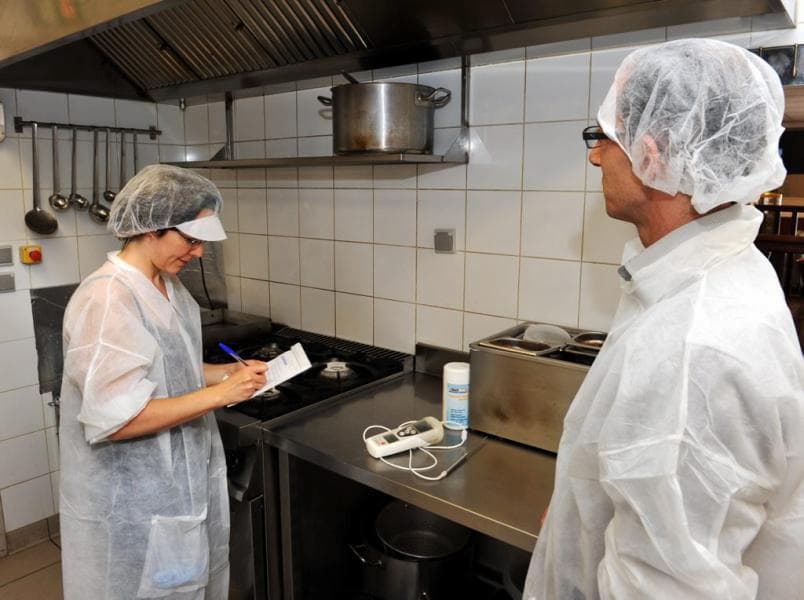HACCP Definition
How to implement an effective HACCP plan
The HACCP method, or Hazard Analysis Critical Control Points, is a systematic and preventive approach to ensure food safety from production to consumption.

Understanding the Principles of HACCP
Recognizing the complexity of the food chain, this international standard identifies, evaluates, and controls significant hazards related to food safety. It is based on seven essential principles that structure its application in food industry businesses.
The seven principles of HACCP include conducting a hazard analysis, determining critical control points (CCPs), establishing critical limits, implementing monitoring systems, defining corrective actions, verifying procedures, and documenting all these steps.
These principles help prevent biological, chemical, and physical hazards in food production processes, thereby ensuring better safety for the consumer.
The Hygiene Package
HACCP Standards in french law
Since the beginning of 2006, European legislation has strengthened its regulatory framework for food hygiene with the introduction of the “Hygiene Package.”
This comprehensive regulation addresses the entire food chain, encompassing production, processing, and distribution up to the final consumer. Consequently, it impacts all catering establishments as well as professions related to the food industry.
Regulation (EC) No. 178/2002 plays a pivotal role in establishing the fundamental principles of the Hygiene Package. This regulation covers all actors in the food supply chains, imposing on them the responsibility to ensure the safety of the food they place on the market. More specifically, it stipulates traceability requirements and the obligation to withdraw products that may pose a health risk to consumers.
Regarding food hygiene, Regulation (EC) No. 852/2004 applies to all food sector operators. It mandates the implementation of procedures based on HACCP principles within a food safety management plan, emphasizing the importance of a preventive approach to food safety.
Specific hygiene rules for food of animal origin are defined by Regulation (EC) No. 853/2004, applicable to all food sector operators who handle or process animal products. This regulation notably specifies the necessity for these operators to obtain health approval.
The legislation is further enriched by various implementing regulations and ministerial decrees, providing a detailed and specific regulatory framework available for consultation on the official government website.
This legislative corpus highlights the authorities’ commitment to maintaining a high level of food safety through strict adherence to HACCP standards, thereby ensuring the protection of consumer health.
Steps to Implement an HACCP Plan
Implementing an HACCP plan follows a sequential logic with multiple steps, starting with the formation of a multidisciplinary HACCP team. This team then describes the products and identifies their intended use, creates a process flow diagram, and verifies this diagram on-site.
It is the understanding and rigorous application of these steps that ensure the effectiveness of the HACCP plan.
Traceability: A central element of Food Safety
In the realm of food safety, traceability is a fundamental concept.
All restaurants, without exception, are bound by a traceability obligation according to HACCP principles.

This requirement is governed by Regulation (EC) No 178/2002 of 28 January 2002, which establishes essential guidelines for food safety, placing food traceability as the seventh and final pillar of the Food Safety Management Plan (FSMP).
Food traceability allows for tracking the journey of a food item or substance at all levels – production, processing, and distribution. This also includes food for animals and animals that produce food.
The goal is to identify the origin and follow the path of any substance that may be incorporated into food, thereby ensuring rigorous risk management for public health.
For effective traceability, our ePackPro experts recommend following these steps:
- Upstream Traceability: It is crucial to conduct meticulous checks upon receiving products, ensuring the quality and safety of incoming food items.
- Internal Traceability: Managing batch numbers and expiration dates (DLC) of sensitive products is essential. This helps maintain precise tracking of products throughout their use.
- Secondary Traceability: Labeling all opened or prepared products before returning them to cold storage is a key step. This ensures that each product can be easily identified and tracked.
The Importance of Training and Engagement of Kitchen Staff
The effectiveness of an HACCP plan also relies on the training and involvement of all food chain actors, from management to operators.
Raising awareness and providing continuous training to staff on good hygiene practices and food safety are essential to maintain the rigor and efficiency of the HACCP system on a daily basis.
This includes understanding hazards, monitoring CCPs, and implementing necessary corrective actions.
The food safety management plan (FSMP): guarantee of food safety
The Food Safety Management Plan, often abbreviated as FSMP, represents a crucial compilation of documents developed by food industry actors. It is based on:
- A set of initial hygiene measures, known as prerequisite programs, essential for ensuring hygiene in the food chain.
- Methods structured on the principles of the Hazard Analysis and Critical Control Points (HACCP) system.
- Management of communication and the ability to trace products throughout their journey.
The PMS is therefore an indispensable tool, not only to meet regulatory requirements, but also to establish a culture of safety and food quality within companies.
By implementing an effective PMS, food professionals demonstrate their commitment to the health and well-being of consumers, thereby strengthening public confidence in their products. This plan is tangible proof of the diligence and responsibility of food actors in managing the health risks associated with their activities.
Call on ePackPro's Expertise
Obligations of Food Professionals: A Strict Regulatory Framework
To protect consumers from health risks, food professionals must strictly adhere to a set of obligations. These are outlined in European regulations, particularly the “Hygiene Package” as well as in French legislative and regulatory texts such as technical instructions and decrees.
Compliance with these directives is essential to ensure the safety and quality of food products. The obligations to be respected are:
- Food Safety Management Plan (PMS): Each professional must implement a documented PMS to ensure compliance with Good Hygiene Practices and Good Manufacturing Practices, tailored specifically to their establishment.
- Obligation of Results, Not Means: The focus is on achieving safe and healthy products for consumers, regardless of the methods used to achieve this.
- Duty of Transparency with Control Authorities: It is imperative to provide all necessary information and facilitate the work of authorities during inspections.
- Responsibility of the Professional: Food actors are held responsible for the safety of the products they market.
- Traceability: Flawless traceability of critical steps and all food products is required to be able to track the journey of each product.
- Staff Training: It is crucial to train staff on the risks associated with handling food and on adhering to established procedures to minimize these risks.
- Recording Information: All data proving that the establishment produces safe food must be meticulously recorded.
- Control and Corrective Actions: Control measures must be in place to monitor the application and effectiveness of the PMS. Corrective actions must be taken in case of detected non-conformities, whether in operation, products, or as a result of analysis.
ePackPro: a Solution for Professionals
In this demanding regulatory context, ePackPro is an essential digital tool for food professionals. Facilitating mandatory recordings and meeting the requirements of the Hygiene Package, ePackPro helps businesses maintain a high level of compliance and food safety, simplifying the daily management of their regulatory obligations.
Meeting these obligations is not just a legal requirement but an ethical approach to ensuring consumer safety and well-being. By adopting good practices and equipping themselves with suitable tools, food professionals can successfully meet this challenge.
For professionals looking to simplify and enhance their HACCP approach while ensuring its compliance and effectiveness, ePackPro offers a digital HACCP solution. With our tool, managing food traceability becomes simpler, more practical, and even enjoyable.
We offer personalized support including demonstrations, training, and customized setup, ensuring a smooth transition to digital HACCP management.
Get in touch
Ready to digitise your food preparation space?
We’d love to demo ePackPro in your place of work. Click below to book a demo or ask us to call you back. We’d love to meet.

Want to Learn More?



